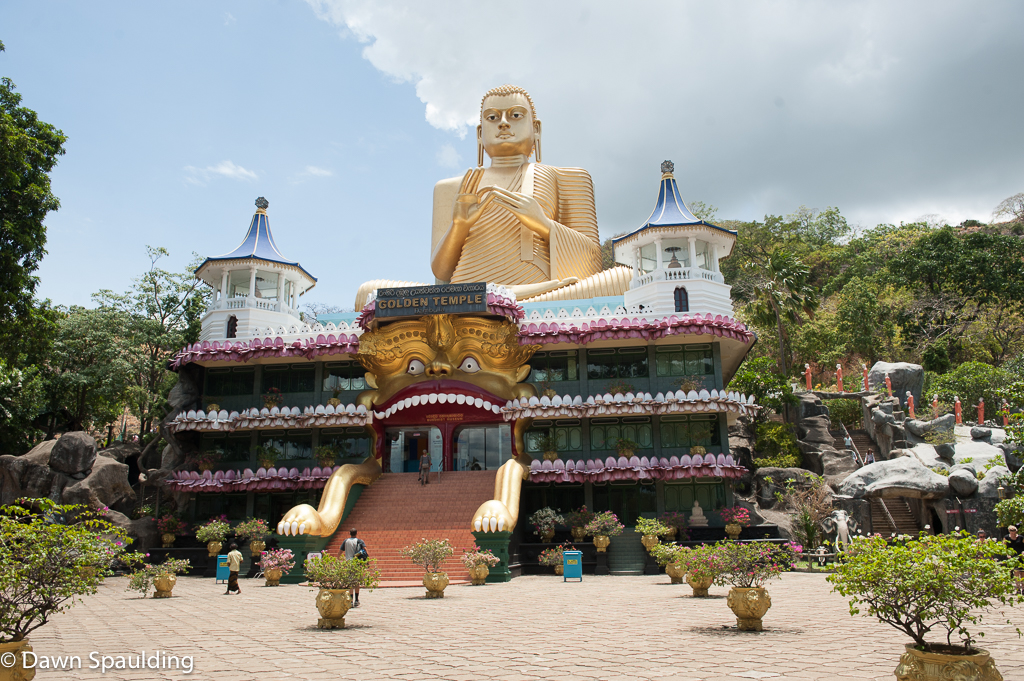
Dambulla Royal Rock Temple is a great example of Sinhalese Buddhist art.
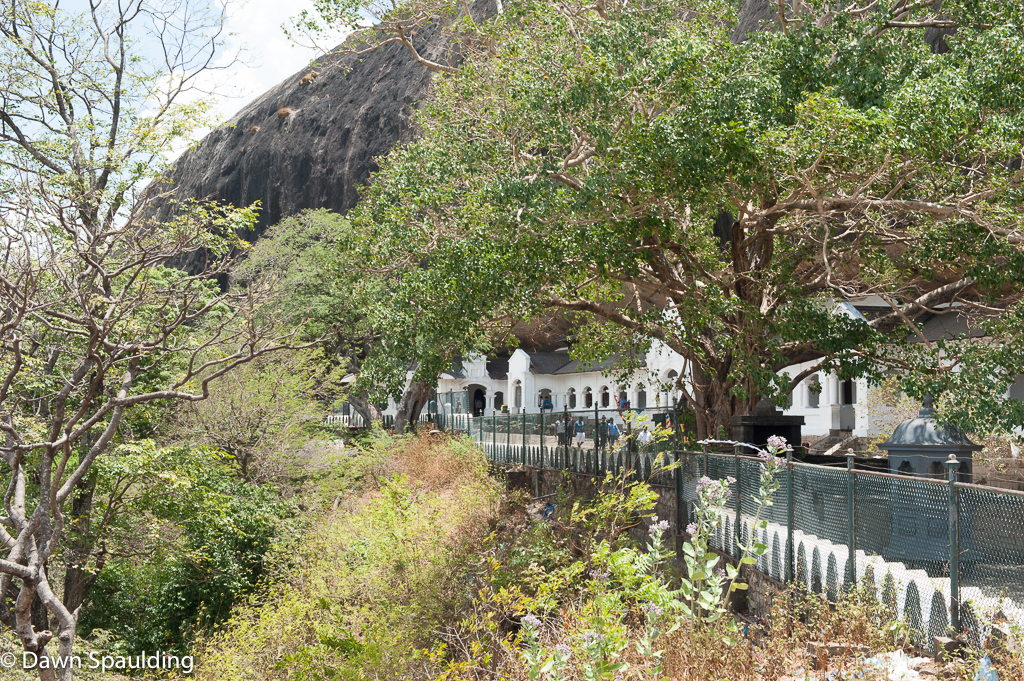
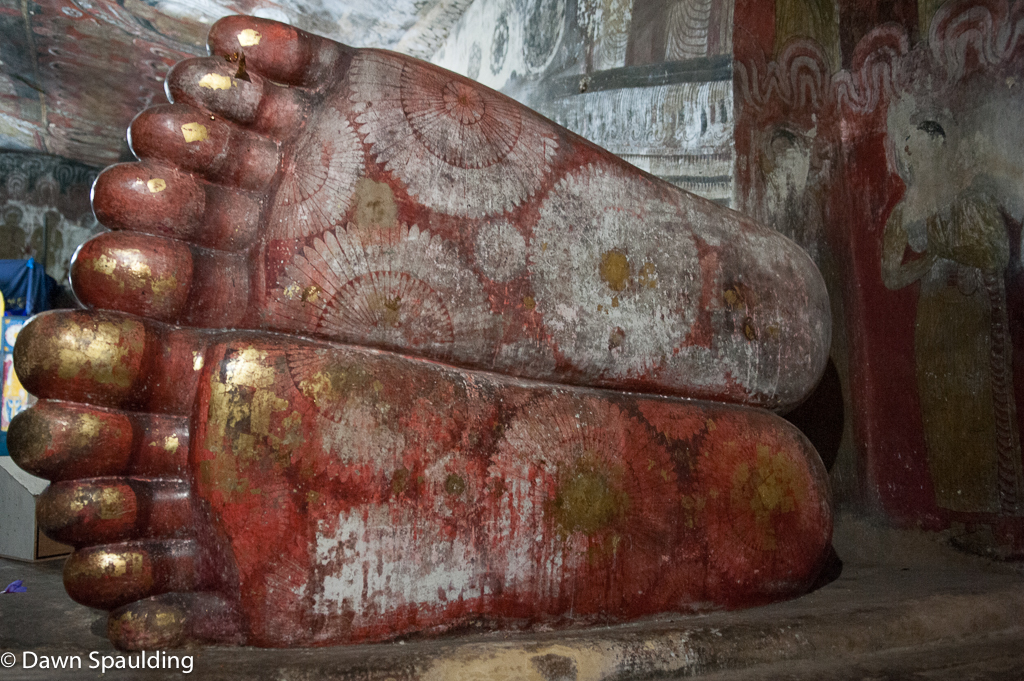
This temple dates back to the 1st century when King Valagamba was driven out of Anuradhapura by Tamil invaders. He took refuge here for 14 years before regaining the throne and converting the caves to rock temples.
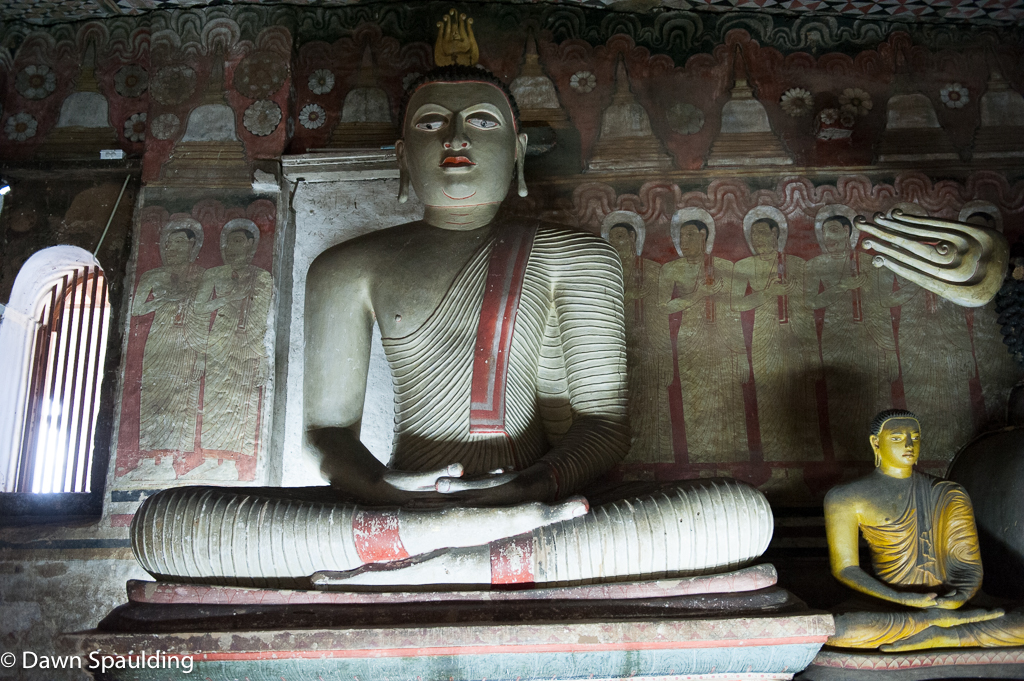
Later kings in the 17th and 18th centuries had the caves’ interiors gilded and restored. Some of the murals were commissioned during these later dates, too.
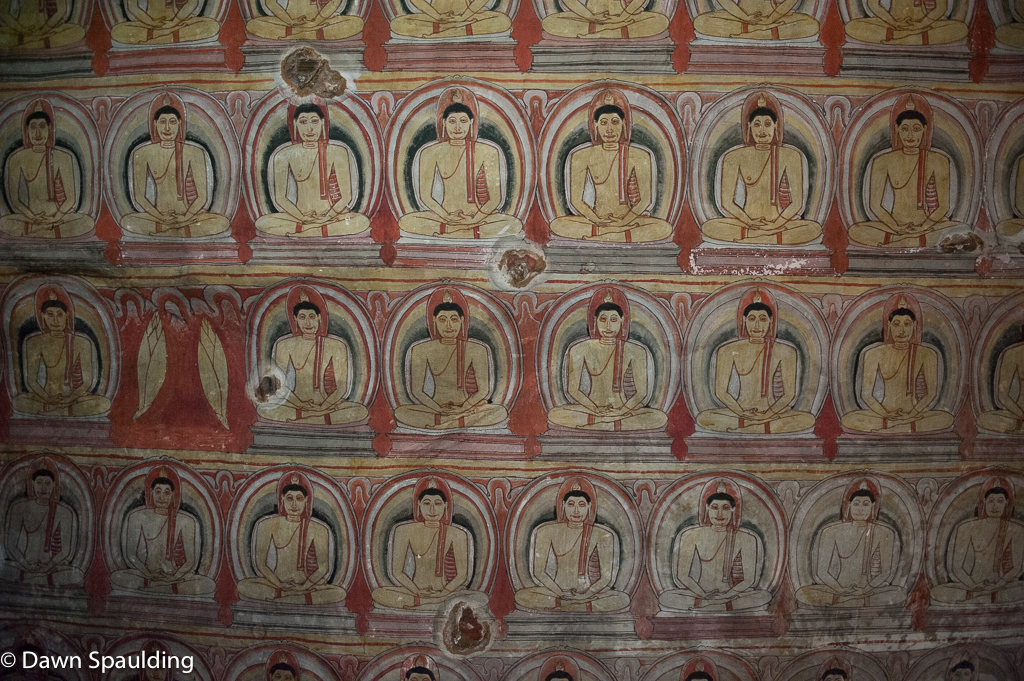
There are five caves containing 150 Buddha images.
Cave 1, Devaraja Viharaya, Temple of the King of Gods features a sleeping Buddha carved out of solid rock. Ananda, Buddha’s disciple, and other figures are depicted and there’s a statue of Vishnu, who supposedly created the caves, in a small shrine.
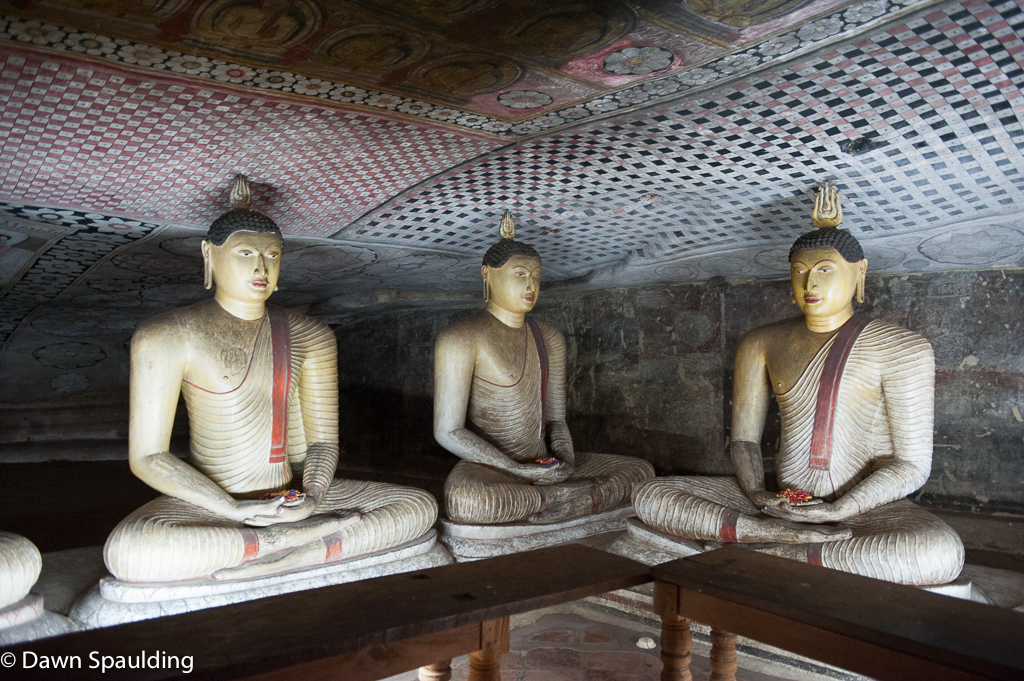
Cave 2, Maharaja Vihara, Temple of the Great Kings houses painted wooden statues of two kings, Valagamba (who created the cave) and Nissanka Malla, hidden at the end behind a Buddha.
Hindu deities are portrayed in statues and on walls. Panels showing dagobas at holy locations and scenes from the Buddha’s life.
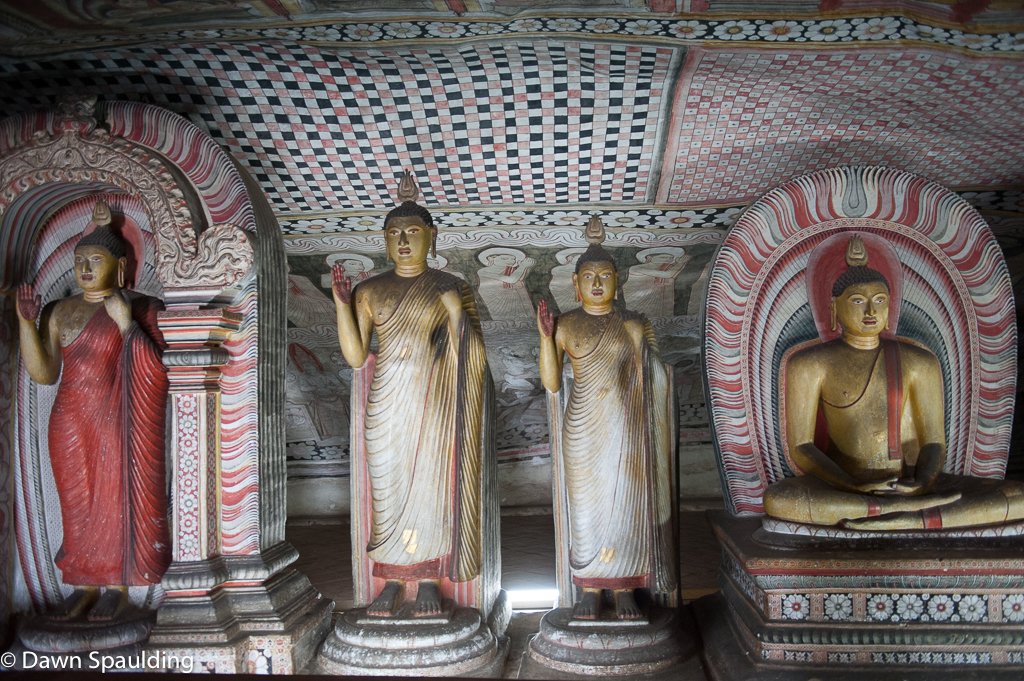
Cave 3, Maha Alut Viharaya, New Great Temple is filled with over 50 Buddha statues and a statue of Kirti Sri Rajasinha, the 18th century king who constructed this cave, surrounded by four painted attendants. A meditating Buddha is seated in the middle and sleeping Buddha are carved out of solid rock. Ceiling murals show future Buddha preaching and an idealized garden.
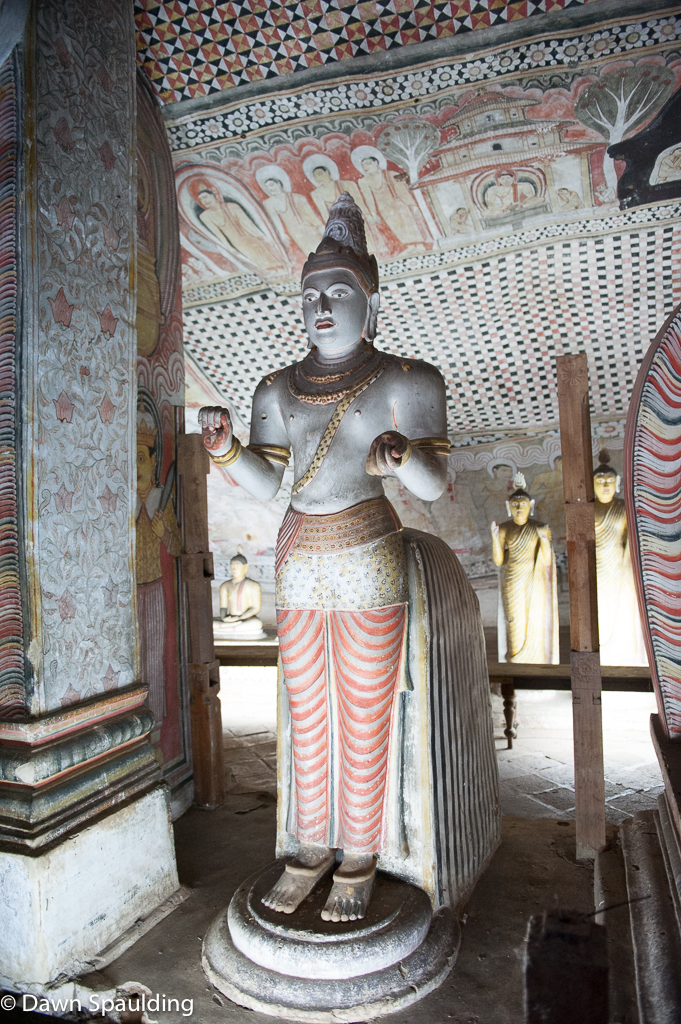
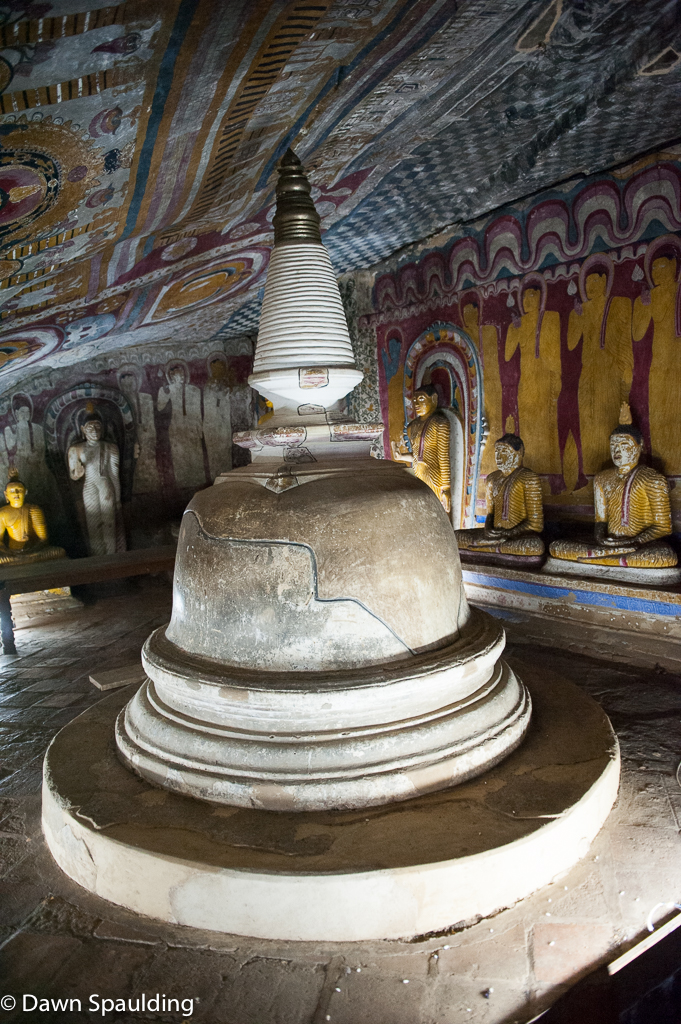
Cave 4, Pachima Viharaya, Western Cave features a seated Buddha in a meditative pose. A small dagoba is in the middle of the cave, cracked by thieves who broke in falsely believing it contained jewels. Walls are depicted with Buddhas and floral patterns.
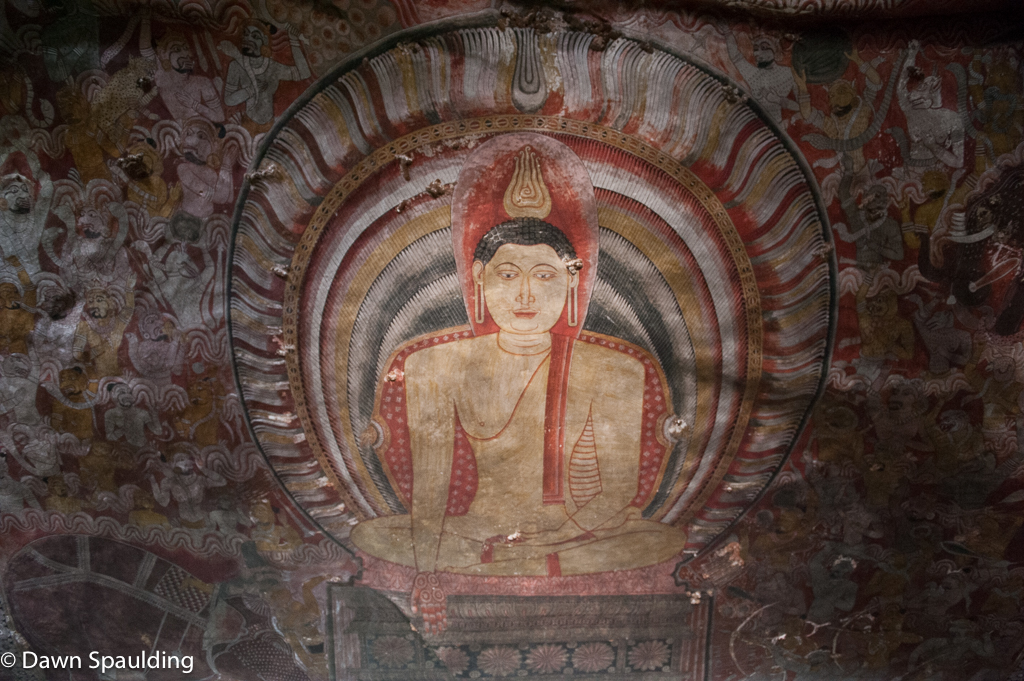
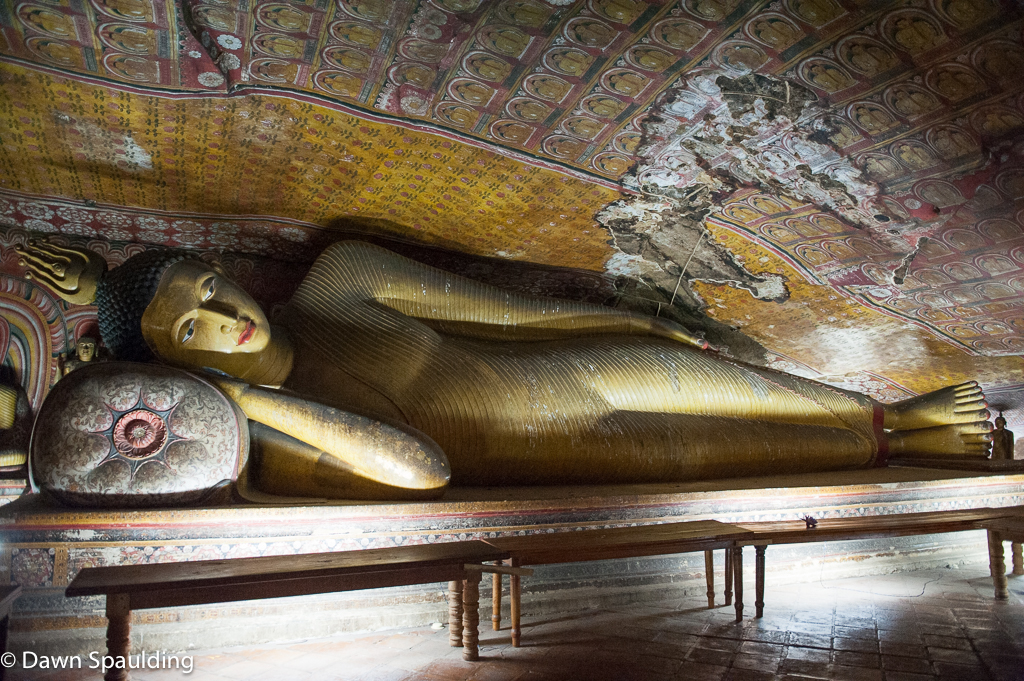
Cave 5, Devana Alut Viharaya, Second New Temple houses a reclining Buddha and murals of Hindu deities. This is the most modern. These images are made of brick and plaster, rather than solid rock like in the other temples.
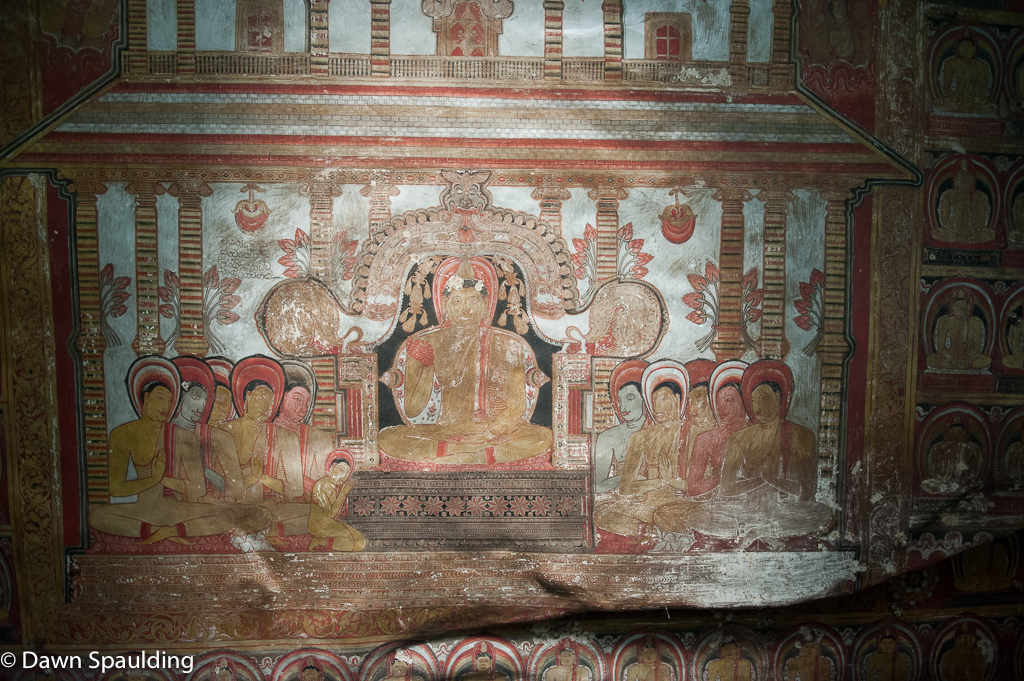
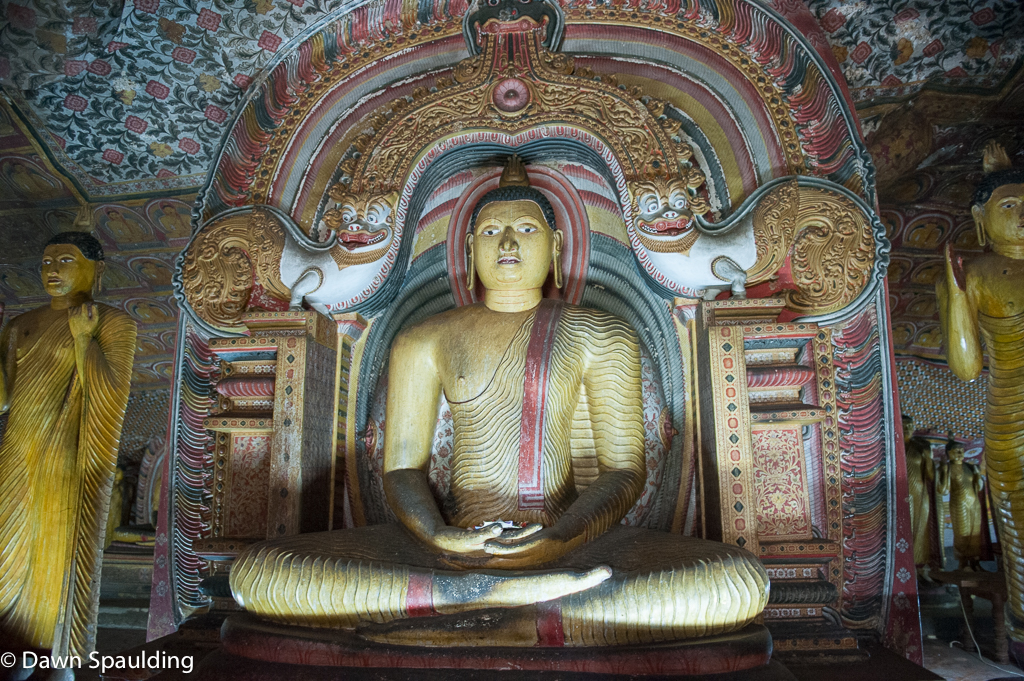
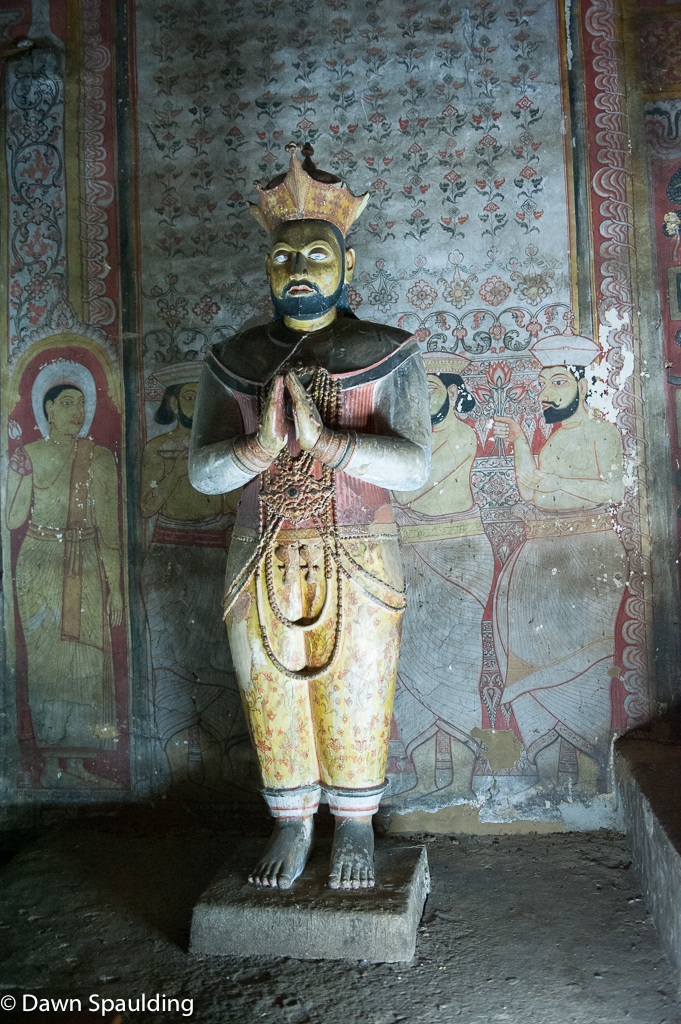
No comments yet.